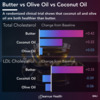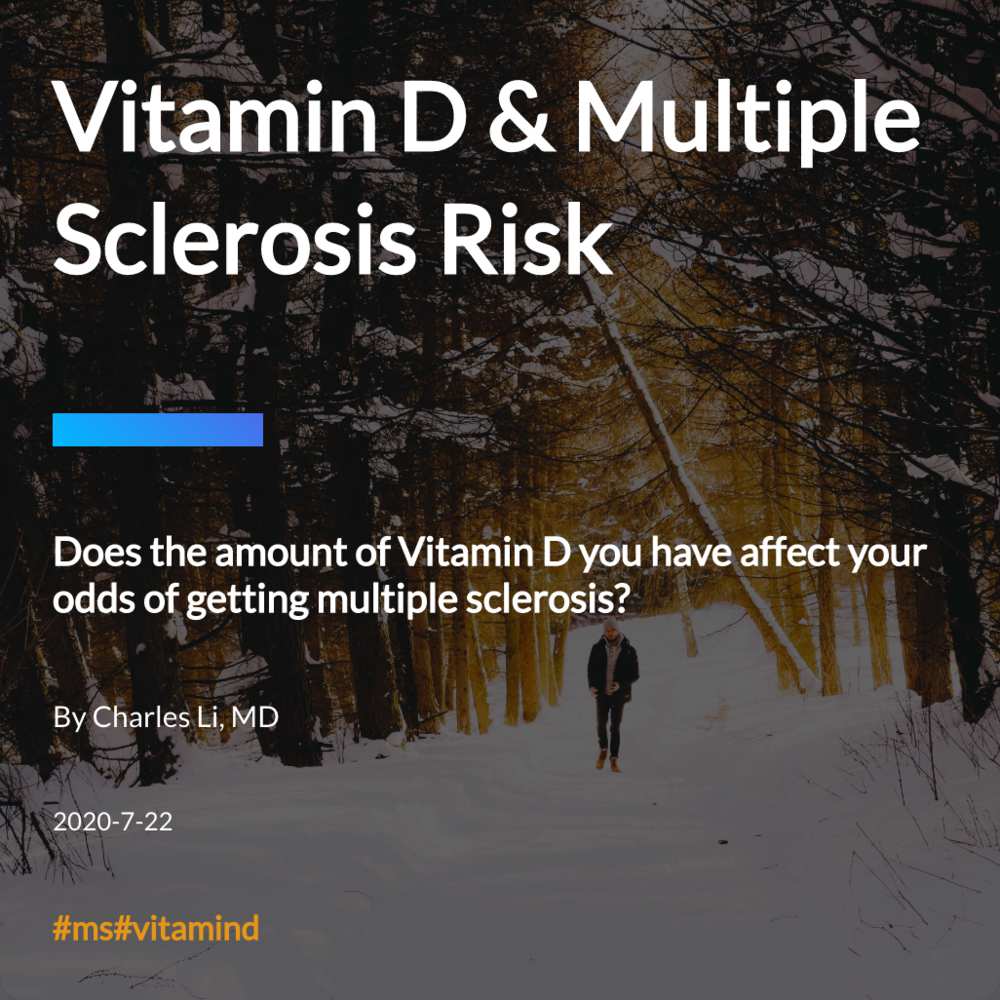
Vitamin D
what is it?
where to get it
Key Facts
- typefat soluble
- sourcediet, skin
- other namescalciferol, cholecalciferol
Appearance

Use List

bone growth

calcium

immunity

the sun
your body can create vitamin D with assistance from the sun

diet
some foods such as milk and fish contain vitamin D

supplements
Vitamin D can also be obtained from dietary supplements

Key facts: Vitamin D plays a key role in bone growth, calcium absorption, and your immune system. Unlike some vitamins, your body can produce it with the help of the sun. Sunlight helps catalyze a key reaction in the production of Vitamin D.

Why Vitamin D Might Play a Role
Many know that Vitamin D helps grow strong bones. Did you know that it also affects a wide range of functions throughout the body including immunity, muscle function, and possibly even cancer risk? Some studies have shown that Vitamin D may play a key role in the development of Multiple Sclerosis.
Multiple Sclerosis
what is it
demographics
disease type

autoimmune
Body System affected

brain & Spinal cord
key symptoms

numbness

Vision problems

Dizziness

age at diagnosis
20-30
MS is typically diagnosed in early adulthood

global cases
2.2 mil.
about 2.2 million people have multiple sclerosis worldwide
gender distribution


Key Facts: Multiple sclerosis is an autoimmune disease that affects the central nervous system. In Multiple Sclerosis, your immune cells attack the insulation around your nerve cells. This can lead to a wide range of symptoms including numbness, vision problems, and dizziness.
Multiple Sclerosis & Sunlight

Geography & Multiple Sclerosis
Multiple Sclerosis tends to be more common in regions that receive less sunlight. Scientists theorized that vitamin D may play a role in Multiple Sclerosis risk.

Map of global Multiple Sclerosis Cases. Red: High death rate from Multiple Sclerosis. Yellow: Low death rate from Multiple Sclerosis. Source: Chris55 / CC BY-SA
Vitamin D Levels & Multiple Sclerosis Risk
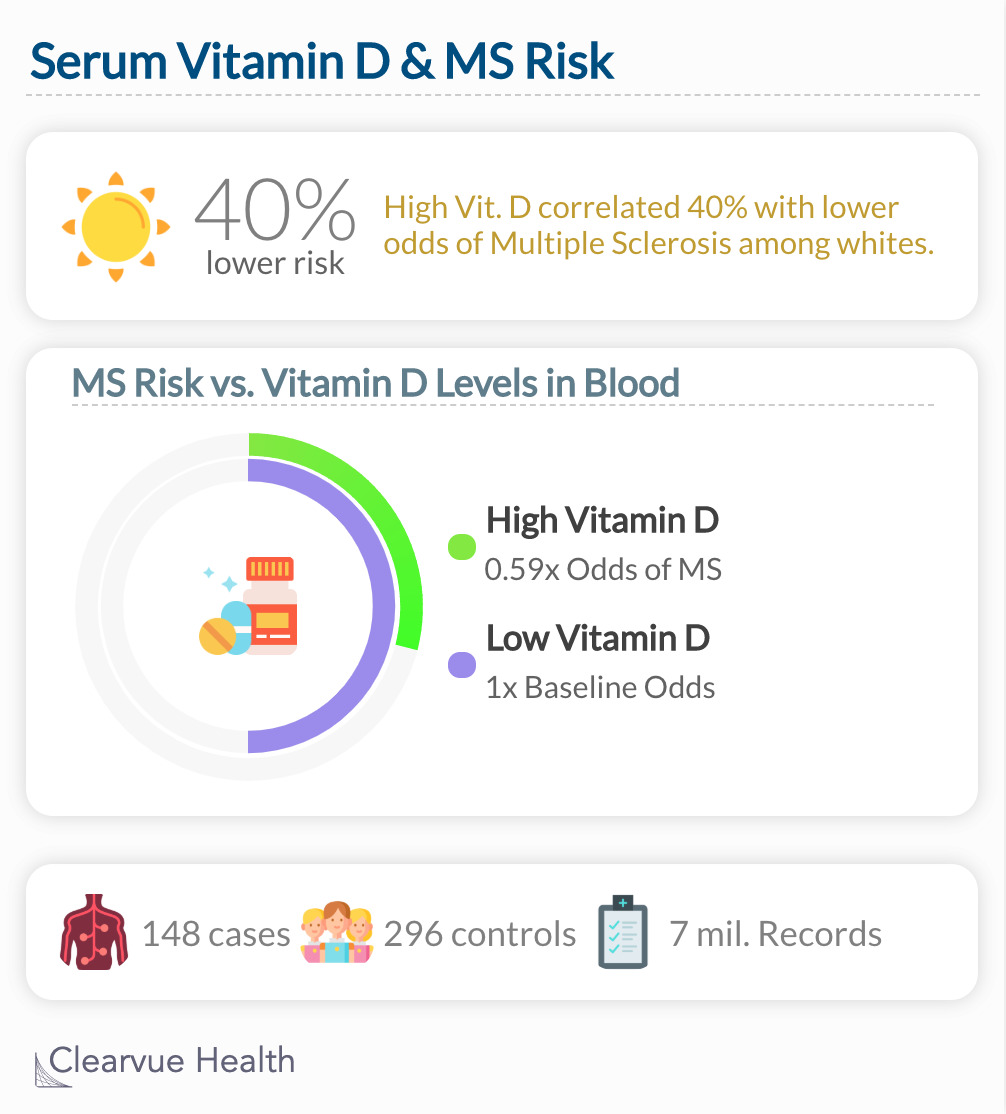

Why this matters
This study shows that the amount of Vitamin D in your blood correlates with your Vitamin D risk if you are White. Interestingly, this same effect was not found in African Americans.
Data Source Quote:
"Our results converge with a growing body of evidence supporting a protective role for vitamin D in MS development. Vitamin D is a potent immunomodulator, and several studies have shown that administration of the biologically active hormone 1,25-dihydroxyvitamin D prevents EAE onset and progression in mice."
Vitamin D Supplements & Multiple Sclerosis Risk
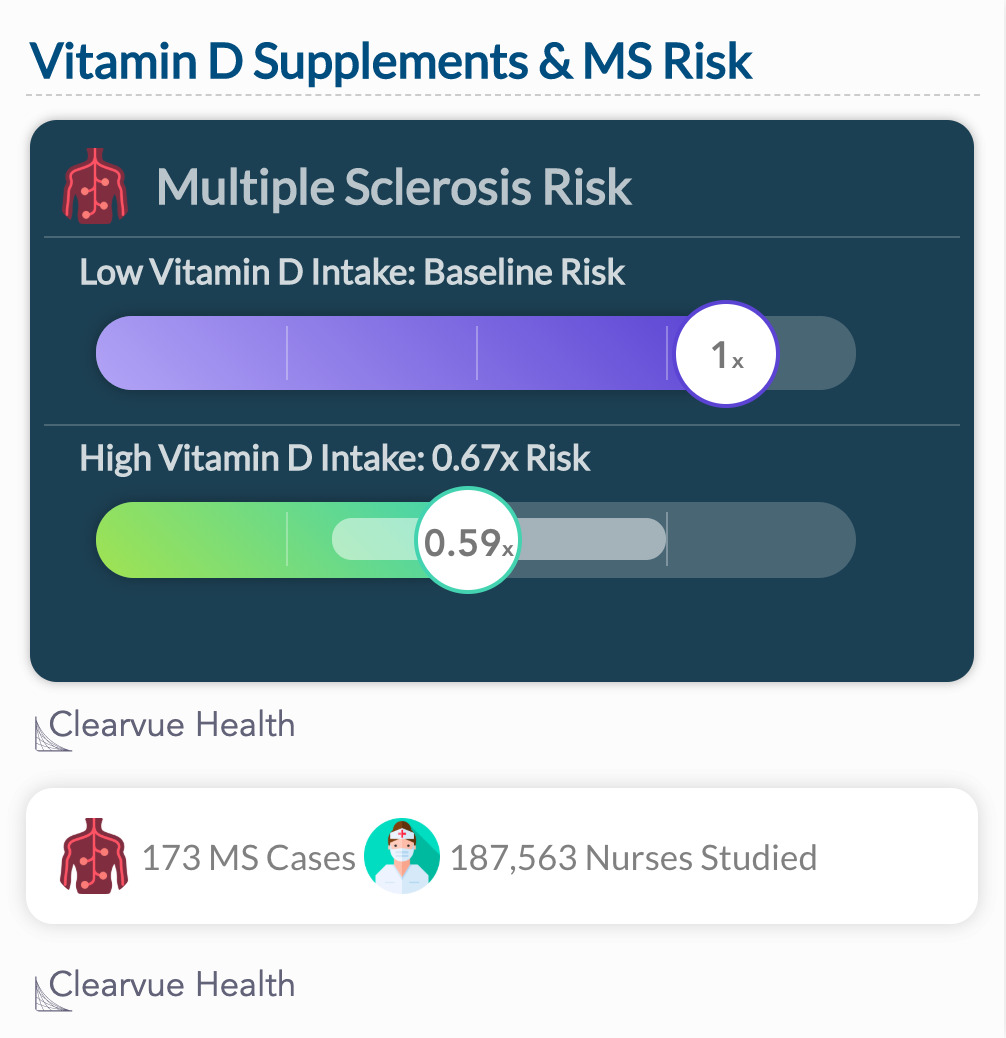
A prospective study found that nurses who took the most Vitamin D supplements had the a significantly lower risk (p=0.006) of developing Multiple Sclerosis compared to those who took the lowest amount of Vitamin D.

Why this matters
This study suggests that taking vitamin D supplements may correlate with a lower risk of developing multiple sclerosis. This is just a correlation, but it suggests that supplementation may be worthwhile if you don't get enough sunlight.
Data Source:
"Intake of vitamin D from supplements was also inversely associated with risk of MS; the RR comparing women with intake of ≥400 IU/day with women with no supplemental vitamin D intake was 0.59 (95% CI = 0.38 to 0.91; p for trend = 0.006). ... These results support a protective effect of vitamin D intake on risk of developing MS."

Key Takeaways
There is evidence supporting that Vitamin D levels and Vitamin D supplement intake may correlate with Multiple Sclerosis risk. As with all observational studies, we can't yet determine whether Vitamin D causes a reduction in risk.
Background
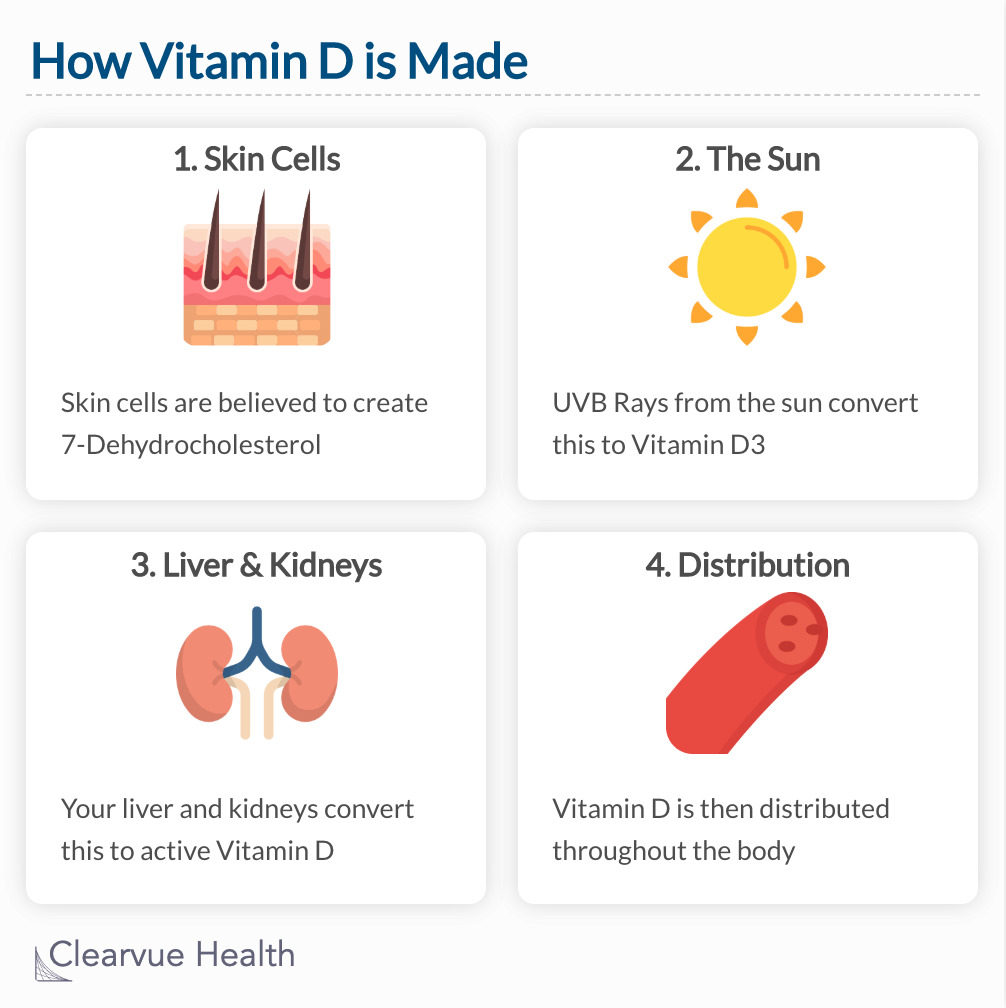
How Vitamin D is Made: Skin cells are believed to create 7-Dehydrocholesterol. UVB Rays from the sun convert this to Vitamin D3. Your liver and kidneys convert this to active Vitamin D. Vitamin D is then distributed throughout the body.
More Information on Vitamin D
More Information on Multiple Sclerosis

#ms
Scroll for more ->
#vitamind
Scroll for more ->





#new
Scroll for more ->














